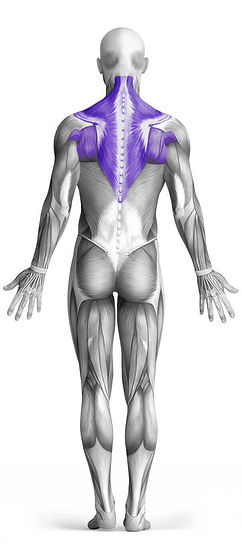Incline Bench Cable Row 101 Video Tutorial
0

Timer
Hour
Minute
Second
Stopwatch
00:00:00:00
Overview
The Incline Bench Cable Row is an effective exercise for strengthening the upper back, with secondary emphasis on the biceps and lats. Performed on a cable machine, this exercise targets the muscles of the upper back, including the rhomboids and trapezius, by pulling a cable attachment towards the torso while seated on an incline bench. The incline position helps reduce the involvement of the lower back and focuses more on the upper back muscles. Additionally, as you pull the cable, the biceps and lats are engaged, providing a comprehensive upper body workout. This movement is great for improving posture and building upper back strength.
How to Perform
Adjust the incline bench to an angle of approximately 45 degrees and place it so that the higher end faces the cable machine’s pulley system.
Attach a straight bar to the lower pulley and select your preferred weight on the machine’s weight stack.
Sit down on the bench, ensuring your chest is against it, with your feet firmly planted on the floor. Reach for the bar with an overhand grip, keeping your hands shoulder-width apart. This is your starting position.
Begin the movement by pulling the bar towards your lower chest, ensuring your elbows remain close to your body. Engage your upper back muscles, including your lats and rhomboids, as you draw the bar in. Avoid allowing the bar to touch the bench.
Once the bar is pulled in as far as possible, pause for a brief moment to maximize muscle activation.
Slowly reverse the motion by extending your arms, bringing the bar back to the starting position with controlled movement.
Repeat the movement for the desired number of reps, focusing on maintaining proper form throughout.
★ Bonus: For exercises that involve external weights (such as dumbbells, barbells, or machines), the One Rep Max (1RM) calculator can help you estimate your maximum lifting capacity. Use it to track your strength progress and adjust your training for optimal results.
Tips
As you pull the bar toward your chest, focus on pinching your shoulder blades together.
Hold this position for a brief 1-2 second count at the peak of the movement.
This will enhance muscle engagement in your upper back, leading to better results.
How Not to Perform
Avoid Using Momentum
Do not use your body to swing the weight. Keep your movements controlled and smooth to ensure that the upper back muscles are the main focus, rather than relying on momentum to complete the movement.
Do Not Shrug Your Shoulders
Avoid raising your shoulders toward your ears as you pull the bar. This can strain your neck and shoulders. Focus on squeezing your shoulder blades together without shrugging to effectively engage the upper back muscles.
Do Not Overextend Your Arms
Do not allow your arms to fully straighten at the starting position. Overextending the arms reduces tension on the target muscles and may lead to joint strain. Keep a slight bend in your elbows throughout the exercise.
Avoid Pulling the Bar Too High
Do not pull the bar too high towards your chest or neck. This can shift the focus away from your upper back and put unnecessary strain on your shoulders. Keep the pull directed toward your lower chest.
Do Not Arch Your Lower Back
Avoid arching your lower back excessively during the movement. This can lead to lower back discomfort or injury. Keep your core engaged and your back neutral throughout the exercise to maintain proper posture and form.
Do Not Use a Narrow or Wide Grip
Avoid excessively narrow or wide hand placements on the bar. A shoulder-width grip is ideal for targeting the upper back effectively. A grip that’s too wide or narrow can lead to improper muscle engagement and unnecessary strain on the wrists and shoulders.
Do Not Rush the Movement
Avoid rushing through the exercise. Take your time to perform the movement slowly and with control, both during the pull and the release. This will ensure that the target muscles, particularly the upper back, are being properly activated.
Avoid Flaring Your Elbows
Do not let your elbows flare out too much during the pull. This can put extra strain on the shoulder joints and reduce the focus on the upper back muscles. Keep your elbows close to your torso as you pull the bar in.
Variations
Variations of fitness exercises refer to different ways of performing a specific exercise or movement to target various muscle groups, intensities, or goals. These variations aim to challenge the body differently, prevent plateaus, and cater to individuals with varying fitness levels.
Alternatives
Alternative exercises in fitness refer to different movements or activities that target similar muscle groups or serve the same training purpose as the primary exercise. These alternative exercises can be used as substitutes when the original exercise is unavailable or challenging to perform due to various reasons such as equipment limitations, injuries, or personal preferences.








